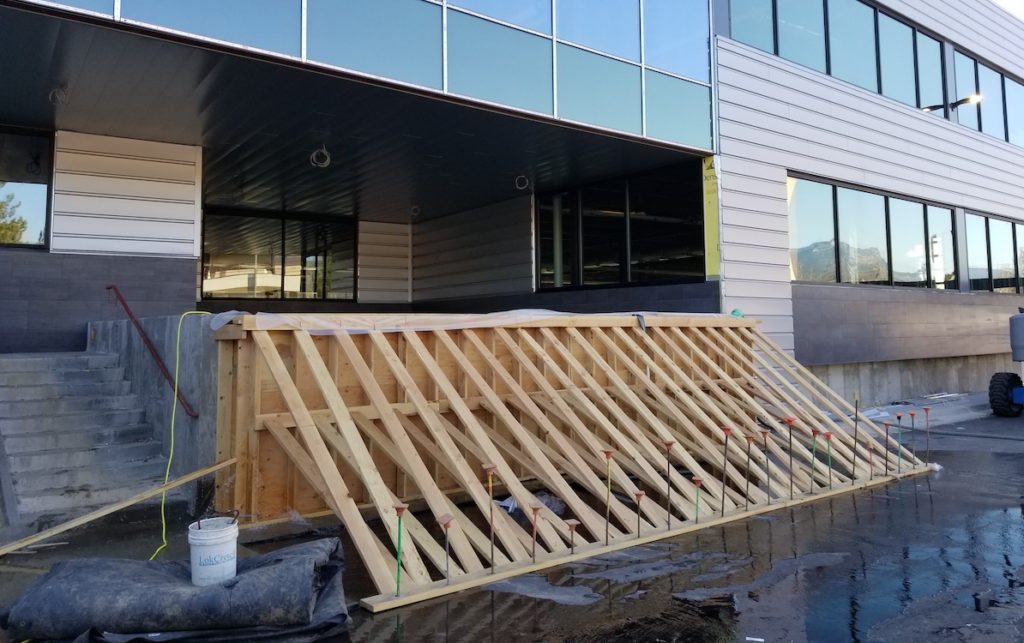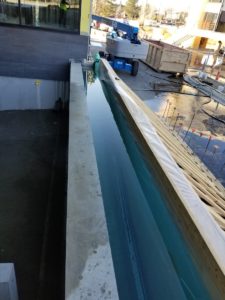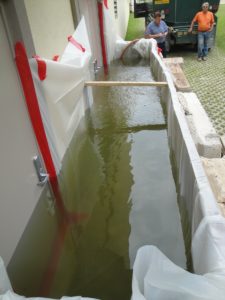 The first step in protecting your building from floodwater is to order a flood barrier from PS Flood Barriers™, but it isn’t the only step. Proper installation is also important, obviously, since an improperly installed barrier will not live up to its potential. With that in mind, PS Flood Barriers provides detailed guidance on field testing as a way to validate the accuracy of the product installation.
The first step in protecting your building from floodwater is to order a flood barrier from PS Flood Barriers™, but it isn’t the only step. Proper installation is also important, obviously, since an improperly installed barrier will not live up to its potential. With that in mind, PS Flood Barriers provides detailed guidance on field testing as a way to validate the accuracy of the product installation.
The Facts:
Once a flood barrier is in place, it is important to test installation integrity to ensure that it is providing maximum flood protection.
The Challenge:
Without flooding present, how can you test the effectiveness of the installation of your barrier to withstand the hydrostatic loads caused by floodwaters?
The Solution:
 There are three main types of field tests that allow users to validate the function, performance and installation of watertight systems after installation. There are short explanations of these tests below, but you can find more detailed instructions by clicking here.
There are three main types of field tests that allow users to validate the function, performance and installation of watertight systems after installation. There are short explanations of these tests below, but you can find more detailed instructions by clicking here.
The Chalk Test
This test provides the least amount of data but is the simplest to perform. It provides a reasonable means of inspecting for continuous gasket contact after initial product installation. The chalk test uses large sidewalk chalk in a color that is easily visible on the gasket and the sealing surface. It involves rubbing chalk onto the sealing surface, not the gasket, then closing and tightening the barrier slowly and checking the chalk that is transferred to the gasket. To see instructions for the complete procedure, click here.
The Hose Test
The second most effective field test, a hose test can assist in verifying that the product achieves continuous gasket compression and that installation junctions are watertight. This test is performed by using a hose to spray water on areas of the product that have leakage potential such as gasket interfaces and between the frame and existing structure. To see instructions for the complete procedure, click here.
 While the hose test provides better data than the chalk test, it’s important to note that sprayed water doesn’t act exactly the same way as flood water. For this reason, the hydrostatic pressure / coffer dam test is preferred whenever possible, since it is provides the most realistic test of the watertight seals.
While the hose test provides better data than the chalk test, it’s important to note that sprayed water doesn’t act exactly the same way as flood water. For this reason, the hydrostatic pressure / coffer dam test is preferred whenever possible, since it is provides the most realistic test of the watertight seals.
The Hydrostatic Pressure / Coffer Dam Test
This test is the best way to ensure that your flood barrier is installed according to PS Flood Barriers’ installation instructions and tolerances. It involves constructing a test enclosure apparatus (known as a coffer dam) to subject the wet-side of the flood barrier and adjacent installation interface to hydrostatic loading. The apparatus can be constructed of various materials including wood, metal, sandbags, or other materials to support the water loading up to the desired water test level. This test is the most involved of the three, and requires the most time, work and care. However, the results are worth it. To see detailed instructions for the complete procedure, click here.
By testing your PS Flood Barriers, you can determine whether they are sealing properly or whether they require adjustments. When performed properly, they can provide extra peace of mind that your products are ready to do their jobs when flooding occurs.
If you have questions about testing a product from PS Flood Barriers or need assistance to find the right flood protection for your facility, contact us at 877-446-1519.